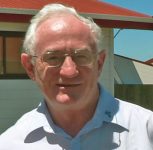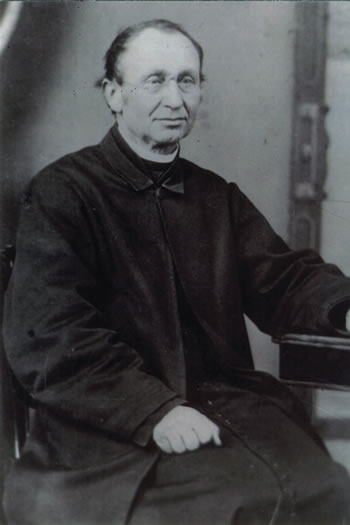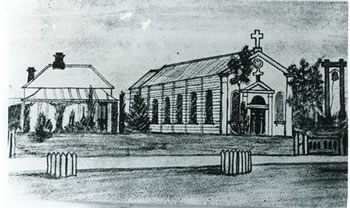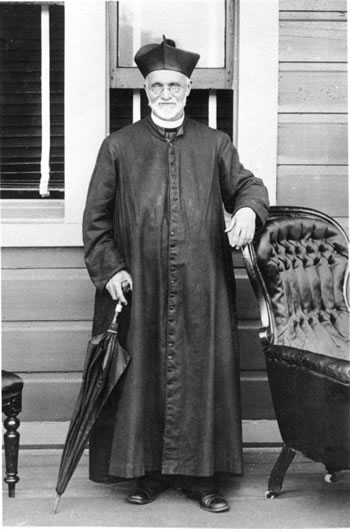Mission in the Deep South
A Neglected part of Marist History?
Many people will have visited Pompallier House in Russell. The preserved earthen walls and ancient printing presses may have led us to reflect on the courage and resourcefulness of Pompallier and the first Marists who ministered there. The drama and the glamour of his mission and later squabbles with Fr Colin form a critical part of Marist history in New Zealand. For such reasons it is all too easy to overlook the extraordinary part that early Marists played in the birth of the Catholic Church in the deep south of the South Island.
The Origins of the Church in Southland
Last Labour weekend St Mary’s parish in Invercargill celebrated its 150th anniversary. The first parish priest was Aimé Martin SM. Though Pompallier had sailed into Otago harbour in 1840 it was almost certainly Jean-Baptiste Petitjean SM who celebrated the first Mass in Invercargill in 1857 having walked there from Dunedin. In many ways it was a much more difficult region than the semi-tropical North. The terrain he would have crossed was mostly swamp and snow tussock dissected by wide rivers. As the mission moved towards the Wakatipu, travellers were forced to pick their way through steep bluffs and ravines, battling heavy bush and shifting scree slopes.
It was Delphin Moreau, based in Dunedin, with occasional help from his Marist confrere Jean-Baptiste Rolland, who became an occasional visitor to Invercargill. Though whalers and sealers had used the southern coast as a base from the late 18th century, later to be followed by dealers in flax, it was only in 1856 that a petition was put to Gore Brown, then Governor of New Zealand, for a port to be established at Bluff. That same year, John Turnbull Thomson, chief surveyor for the Otago Province, laid out the street plan for Invercargill, 28 kilometres inland on the river flats; by December 1857 the town boasted 14 houses, two hotels and three stores. Thereafter growth was slow. When Petitjean was traversing the entire Otago/Southland area in 1861 the Catholic population was just 126 people out of 1,876 inhabitants.
With the discovery of gold at Gabriel’s Gully the scene changed dramatically. Miners poured in from Australia and America, many of Irish origin. Diggings opened up spread from Tuapeka to Waitahuna to Cardrona. In June 1862 Philippe Aimé Martin SM was transferred from Nelson to help in this rapidly growing area. Since the diggings were 120-150 miles from Dunedin, Martin bought a horse and set out in early November. With little experience as a rider he recounts how he set off to visit a hospital in Tuapeka only to be thrown from his mount when just 400 yards from his destination and ending up in the hospital with a fractured wrist and a badly bruised face. Within a year or so, however, he had become a skilled horseman often still in the saddle when night fell, sleeping under a tree with his saddle as his pillow. Many nights there was little or nothing to eat unless he found a miner’s tent where he was fed. His intrepid journeys going from canvas settlement to rough camps made him a beloved figure among the miners who knew that he had trekked rugged mountain trails and swum deep rivers to bring them the sacraments celebrated on rough altars in tents and shanties. Many a Protestant also came to hear his words of wisdom and care.
In these early days Mass was usually celebrated in a public hall, hotel or the home of a Catholic settler. In May 1863 after Martin had performed a baptism in Arrowtown, a group of local Catholics gathered and began planning for a church building which was opened in September of that year. At the same time work had begun on a church in Clyde Street in Invercargill. Martin became the first official parish priest of the Invercargill/Wakitipu area in early 1864. On his arrival in New Zealand in 1861 he spoke no English. Of his first sermons in the deep South he was later to remark laconically, “I was not eloquent, but I was understood.” On 23 October Bishop Viard, who had come down from Wellington, solemnly blessed the church.
Martin was to remain in the area till 1868, being helped with the work in the Wakatipu area by the diocesan priests, Patrick Duhig and Emmanuel Royer. A Marist confrere, Henry Belliard who had arrived in New Zealand the previous year, came to assist him in Invercargill in April 1865. Looking back on his work in the area a bit later the Tablet commented, “Father Martin left behind him a name and memory which are a benediction.”
After his arrival in his new Diocese of Dunedin in February 1871, Bishop Patrick Moran wasted no time in making a tour of his territory travelling via Naseby, Cromwell and Arrowtown to Queenstown. Having been given before his arrival an impression of a well provided Diocese he was deeply disappointed by the poverty and simplicity he discovered. It is sometimes thought that this disappointment was the reason for the rapid withdrawal of the three remaining Marists (Moreau, Ecuyer and Belliard) to the north. However, the Marists were needed for other mission work, and no doubt the memory of the tensions experienced with Bishop Pompallier also influenced the Marist administration in making this move. Moran was sad to lose such dedicated and experienced missionaries.
Looking back
Though they lived in another era and with quite different roles and expectations, the lives of men like Moreau and Martin can still inspire and enlighten us. For me, three great lessons emerge. The first is their willingness to put all they were capable of into their work despite the personal and pastoral constraints with which they were burdened. I can picture Martin trying to guide his horse through the steep valleys and across the racing mountain rivers of Fiordland, doing his best just to stay in the saddle. It is all too easy to imagine his attempts to preach to Irish miners, many of whom spoke an English a long way from that taught at Eton or Oxford. I also admire their willingness to start projects from scratch, searching for support wherever it was to be found, in the Catholics who made possible the churches in Arrowtown and Queenstown, or the parents who banded together to create a Catholic school in Invercargill, a town that had grown out of an initiative of the Free Presbysterian Church of Scotland less than a decade before. Through this shines a rugged belief in God’s providence that had called them so far away from their homes in France, to a strange land, with an uncouth tongue and inhabitants, yet to a place where Mary’s mercy and graciousness was to be proclaimed with confidence and unshakeable hope.





 Entries(RSS)
Entries(RSS)